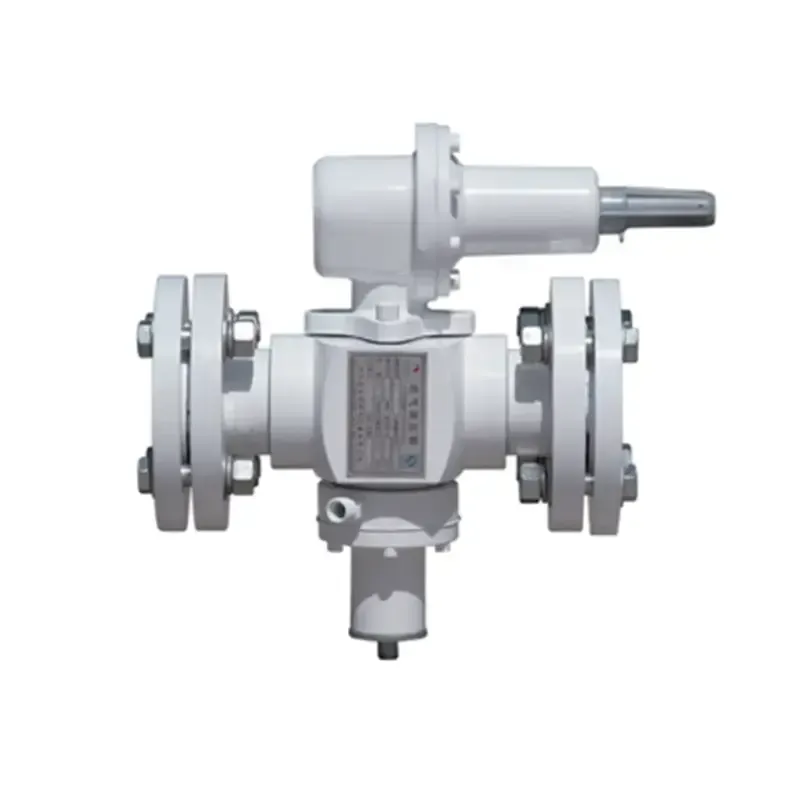
Dec . 24, 2024 13:11
Back to list
safety relief valve
Understanding Safety Relief Valves Critical Components for Industrial Safety
Safety relief valves are critical components in various industrial applications, designed to protect pressure vessels, pipelines, and other equipment from exceeding their maximum allowable working pressure (MAWP). These devices play an essential role in ensuring the safety of operations involving pressurized systems, preventing catastrophic failures that could result in significant damage to equipment, environmental harm, or even loss of life.
What is a Safety Relief Valve?
A safety relief valve is a spring-loaded pressure relief device that opens to allow the excess pressure to escape from a system, thus preventing over-pressurization. They are commonly found in industries such as oil and gas, chemical manufacturing, pharmaceuticals, and power generation. By automatically releasing pressure when it reaches a preset threshold, these valves help maintain system integrity and safety.
How Safety Relief Valves Work
The primary mechanism of a safety relief valve involves a spring that holds a disc or seat in place against the pressure of the system. When the internal pressure exceeds the set point, the spring compresses, and the valve pops open, allowing the pressurized fluid—liquid or gas—to escape. This action helps quickly reduce the pressure in the system to a safe level.
Once the pressure drops back down to an acceptable threshold, the spring forces the valve back to its closed position, resealing the system to continue normal operations. This automatic operation means that safety relief valves do not require manual intervention, making them an efficient solution for pressure control.
Types of Safety Relief Valves
There are several types of safety relief valves, each designed for specific applications
1. Spring-Loaded Safety Valves The most common type used in various industries, featuring a simple mechanical design. They are favored for their reliability and ease of maintenance. 2. Pilot-Operated Relief Valves These valves utilize a smaller pilot valve to control the opening and closing of a larger valve, allowing for lower set pressure and higher flow rates. They are often used in larger systems where the standard spring-loaded valves would be insufficient.
safety relief valve

3. Vacuum Relief Valves Designed to protect against negative pressure conditions, these valves open to allow air into the system when the internal pressure drops too low, helping to prevent equipment collapse.
4. Thermal Relief Valves These are specifically designed to prevent excessive pressure build-up due to thermal expansion of liquids, frequently used in applications where temperature fluctuations are common.
Importance of Safety Relief Valve Maintenance
Regular maintenance and testing of safety relief valves are crucial for ensuring their reliability and performance. Over time, valves can become corroded, fouled, or lose their calibration due to continuous exposure to harsh environments and extreme conditions.
Industry standards typically recommend conducting routine inspections and functional tests on these valves to verify that they open and close properly at the designated pressure settings. The American Society of Mechanical Engineers (ASME) provides guidelines for the maintenance and operation of pressure relief devices, which industries must adhere to for compliance and safety assurance.
Regulatory Compliance and Standards
Given their critical role in preventing accidents, safety relief valves are subject to stringent regulatory standards. Organizations such as ASME, the National Board of Boiler and Pressure Vessel Inspectors, and the Occupational Safety and Health Administration (OSHA) establish guidelines and regulations that govern the design, installation, testing, and maintenance of these valves.
Adhering to these standards not only ensures compliance but also significantly enhances workplace safety. Industries are held to high standards when it comes to the design and operation of pressure systems, and failure to comply can result in heavy fines, legal repercussions, and, most importantly, increased risk to employees and surrounding communities.
Conclusion
Safety relief valves are indispensable devices that play a vital role in maintaining safety in industrial environments. They protect against the dangers of over-pressurization by allowing excess pressure to escape, thus safeguarding equipment and personnel alike. Understanding how they work, their types, maintenance requirements, and regulatory compliance is essential for anyone involved in the design, operation, or oversight of pressurized systems. By respecting these safety devices, industries can significantly reduce the risk of accidents and ensure a safer working environment for all.
Latest news
-
Safety Valve Spring-Loaded Design Overpressure ProtectionNewsJul.25,2025
-
Precision Voltage Regulator AC5 Accuracy Grade PerformanceNewsJul.25,2025
-
Natural Gas Pressure Regulating Skid Industrial Pipeline ApplicationsNewsJul.25,2025
-
Natural Gas Filter Stainless Steel Mesh Element DesignNewsJul.25,2025
-
Gas Pressure Regulator Valve Direct-Acting Spring-Loaded DesignNewsJul.25,2025
-
Decompression Equipment Multi-Stage Heat Exchange System DesignNewsJul.25,2025

